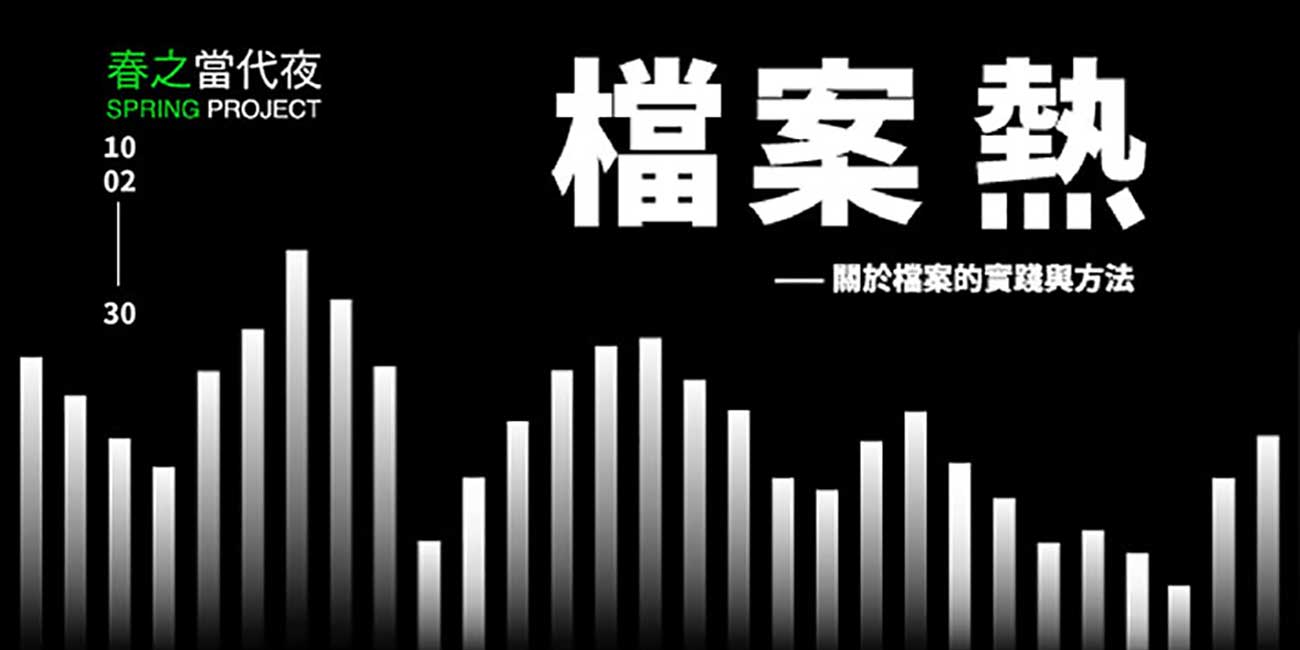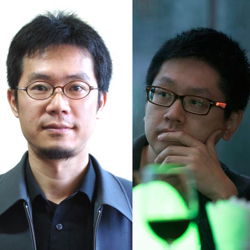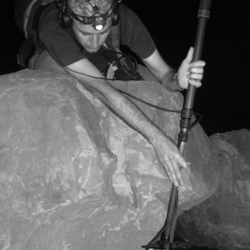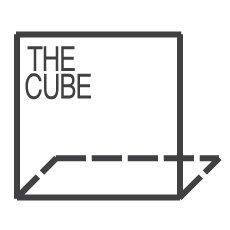
Archive Frenzy – On the practice and methods of archives
An increasing number of artists in recent years seem to regard “archives” as a highly kinetic media in their process of artistic production, both in expressive form and contemplation; utilizing large quantities of archives in their the performance and exhibition of their work. Archives are not only material for but a proposition of multi-layered perspectives. Artists reflect on the fundamental significance intrinsic to “archives”, and expound on its possibilities for awareness. In addition to reinterpreting archives, there is intent to use the archive format as a basis for “re-creation” and “re-exposition”. This suggests that applications of archives are no longer limited to previous modes of appropriation or reproduction, but have become a methodology of constructivism. It initiates dialog on three relevant levels in this still-expanding domain: the field (experience), genealogical excavation (knowledge), and thought (creativity); and collaborates with the three aspects to construct an alternative knowledge and artistic form. This series will explore how archives have become a new method of practice, and how this method manifests, by reevaluating the ways in which archives have been implemented and its meanings converted in various art forms in recent years.
For this lecture series, four panels of speakers have been invited to open up discussions on the significance and applications of “archives” in contemporary art production. I. How and why do artists utilize archives: artists James T. HONG and CHEN Yin-Ju (October 2) dissects their creative concepts and their purposes for utilizing archives through examples in their own work where vast amounts of archives are revisited, appropriated, and even reinterpreted; II. Archives and thought patterns: Historians SING Song-Yong and GONG Jow-Jiun (October 9) discuss how the process of “a return to archives” instigates the occurrence of new practices through the curatorial practice of two contextual paths of Taiwanese video art and Taiwan New Cinema that are currently being researched and implemented. III. Archives and Freedom of Speech: Head of the Research and Publication Department at the OCAT Institute in Beijing, DONG Bingfeng. (October 16) discusses his in-depth observations after years of personal involvement in the research of “moving images” in China, and the challenges of preservation and survival confronted. IV. Fieldwork, documentation, and archive: With his years of working in the field of sound recording as a starting point, sound artist and recorder Yannick Dauby (October 30) explores the significance of recording sound and its ability to be heard repeatedly.
Through these themes and cross-sections of archives and its relevance in contemporary art explored in these four lectures, we hope to illustrate the complex relationship of archives with concepts, actions, and applications; as well as to raise follow-on questions worthy of attention and exploration in the “archive frenzy” of the current artistic environment.
(Curated by Amy Cheng / TheCube Project Space)
Introduction:
#1 Remarks on Prejudices and the Archive / Appropriation — Archives
Moderator:Jau-Lan Guo / Curator and Art critic
Speakers:James T.Hong, Yin-Ju Chen / Artists
Date: 2nd October, 2015

Remarks on Prejudices and the Archive
“Who controls the past, controls the future. Who controls the present, controls the past.”
For the American band Rage Against the Machine, these words from George Orwell’s Nineteen Eighty-Four are a rallying cry of resistance. To me, they are simple institutional facts concerning archives. The largest archives, such as the U.S. National Archives or Corbis/Bettman, are usually state run or owned by corporations. They and other archives and libraries like them control the distribution of a nation’s collective memory – in this case the United States. Their ultimate reason for existence is to validate the continuation of the state, and as such, they will always be meaningfully incomplete. However, there are possible exceptions, such as Wikileaks and the “stolen” archives of Edward Snowden.
As an artist researcher, I never enter an archive without an agenda. I already have an aim or I am looking for evidence confirming an accusation. My motivations and personal background provide an interpretative context for everything that I find within an archive. I will never discover an unadulterated “truth.” The search for truth is never a primary motivation for archival research. There are simply too many irrational motives and implicit presuppositions. This is one formulation of the “hermeneutic circle” as developed by Martin Heidegger and Hans-Georg Gadamer.
My prejudiced thesis is that the archive researcher, even the occasional apolitical artist type, always has an ideological agenda, which is frequently nationalistic. Moreover, the initial creation of any archive reflects the ideological motivations of the founding archivist(s).
Some topics:
- Hermeneutic circle
- U.S. National Archives and the Hoover Institution
- Corbis/Bettman Archive
- Taiwan’s Academica Historica
- Creating an archive — > Apologies
- Wikileaks and redaction
- Edward Snowden
- Richard Holbrooke and historical bullshit
Appropriation — Archives
Archival information can be categorized into four formats: text, photographs, moving images, and sound. These have been appropriated under the creative framework of contemporary art for over fifty years. In the category of photography, I will give a brief overview of Archive Fever: Uses of the Document in Contemporary Art curated in 2008 by Okwui Enwezor at the International Center of Photography in New York. In the category of textual history, I will introduce artist WANG Hong-Kai’s Dancers of the Millions (2015) unveiled at the 2015 Kyoto International Festival of Contemporary Culture; discuss in appreciation The Military Industrial Complex, another work that is primarily a textual reading, by this year’s Turner Prize nominee Bonnie Camplin; and compare my most recent practice Notes on Psychedelics(2015). In reviewing the category of moving images, I will also share the creative contexts for my own works Action at a Distance(2015), this work appropriates a significant amount of found footage/ archival footage.
The interweaving of artistic creativity and archival data continually produces new meanings in contemporary art. The artist’s research methodology for creative themes has become an important aspect of the work that guides the viewer to the artist’s creative and research context rather than merely satisfying through a visually dazzling transformation. In the process of de-visualization, I will take a few minutes to review some art history, namely the rise of conceptual art. The work of self-documentation Post-Partum Document (1973-1979) which took conceptual artist Mary Kelly seven years to complete will be discussed as an example of an artist creating her personal archival repository.
#2 For that which will not occur: an alternate Image history of Taiwan
Moderator:Amy Cheng / Curator
Speakers:Jau-Lan Guo / Curator and Art critic
Gong Jow-Jiun / Associate Professor of Doctoral Program in Art Creation and Theory of Tainan National University of the Arts
Sing Song-yong / Associate Professor of Graduate Institute of Animation and Film Art of Tainan National University of the Arts
Date: 9th October, 2015

It’s been 33 years since the beginnings of Taiwan New Cinema in 1982. Though the movement came to a close in the 1990s, have we truly experienced the completion of Taiwan New Cinema with the occurrence of various debates and limitations in the domestic cinema system? Hsieh Chinlin’s Flowers of Taipei – Taiwan New Cinema which premiered in Taipei in 2014 represents a shift in perspective and renewed contemplation. In this age of the internet, the “ ACT: Revival Rhizome Plan for Taiwan New Cinema” attempts to reintroduce a plan to resurrect Taiwan New Cinema as an audio-visual archive that presents a potential path for audiovisual diversion and archival contemplation in contemporary art.
In the year after the birth of New Cinema, a new creative trajectory for video art made a first appearance in the developmental history of Taiwan’s image art: KUO Yi-Fen and KAO Chung-Li each unveiled works of video installation and video sculpture. Three decades later, the exhibition Rewind-Video Art in Taiwan 1983-1999 due to open at the Kuandu Museum of Fine Art this October begins with vintage reissues as a starting point for reconstructing Taiwanese video art, then gradually completing a timeline of work completed around a similar era. Vintage reissues are more than mere archival embodiment, but are a curatorial method: the exhibition becomes a form of conceptualizing archives of video art.
#3 Prohibition, Resistance, and Self-Organization: Video Art Archives in China
Moderator:Anthony Yung / Project manager of China research projects at AAA (Asia Art Archive)
Speakers:Dong Bingfeng / Academic Director of OCAT Research Center
Date: 16th October, 2015

In the past decade, the retrospection/exhibition, archival excavation, and historical documentation/writing of Chinese contemporary art history has reached an unprecedented fervor and intensity. Specifically, endless discussion and research on the topic of the “85 New Wave”, and the New Wave art movement in China in the 1980s has created its own school of thought.
In light of this surge, the ecology and status of Chinese “video art” which began in the early 1990s seems comparatively isolated and marginalized. On one hand, it is difficult to carve out a niche for “video art” in the overall marketization of Chinese contemporary art; on the other hand, the innately heterodox (anti museum) character of image art such as video art (anti museum) or art-house and independent films (anti establishment), have always attempted to seek out new linguistic and political autonomy and mobility.
The lecture will explore effective actions of definition, research and publishing of “video art” in China through case studies of two non-profit organizations for the archiving and research of video art, Li Xianting’s Film Fund (established 2006 in Beijing) and Video Bureau (established 2012 in Guangzhou and Beijing), in order to seek out a alternate angle to reflect on and imagine a pluralistic future and potential for Chinese contemporary art in the midst of rapid social change.
#4 Sound Report from the Field
Moderator: Jeph Lo / Curator and Sound culture researcher
Speaker: Yannick Dauby / Artist
Date: 30th October, 2015
Field recording is an unpredictable audio practice. It does not merely capture a sonic event or environmental sound, nor does it objectively document reality, it also involves dialogue with random situations, including sonic spaces, tools, participants, flora and fauna, atmospheric phenomena, and various accidents.
When and how do recordings made in this context achieve the status of reliable documentary? What is the significance of a listening experience that is mediated by a microphone and headset? What does it mean to enable sound memory, or to transform ephemeral sound into something that can be repeatedly played? What is a sound archive? How is an archive established?
In this lecture, sound artist Yannick Dauby who works primarily with field recordings will share his experiences working in Taiwan, as well as his research on sound culture, sound environment, and sound creation.



